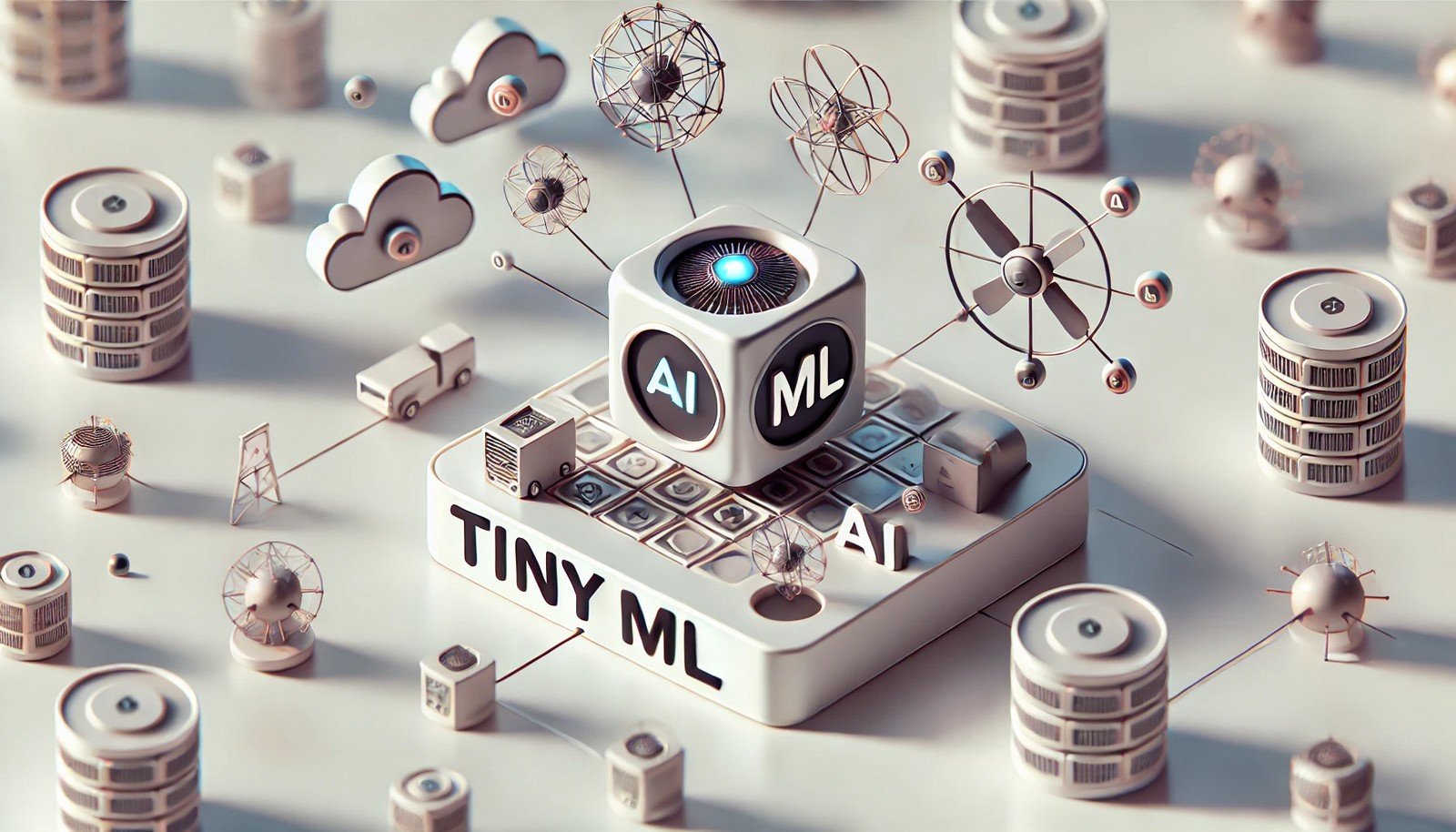TinyML

Quick Navigation:
- TinyML Definition
- TinyML Explained Easy
- TinyML Origin
- TinyML Etymology
- TinyML Usage Trends
- TinyML Usage
- TinyML Examples in Context
- TinyML FAQ
- TinyML Related Words
TinyML Definition
TinyML is a field of machine learning that specializes in creating lightweight models capable of running on resource-limited hardware, such as microcontrollers and other edge devices. These models are optimized to require minimal memory and computational power, allowing them to function in real-world settings where connectivity and power are limited. By leveraging techniques like model compression and quantization, TinyML enables AI-driven insights directly on small devices, minimizing latency and enhancing privacy by processing data locally.
TinyML Explained Easy
Imagine a tiny computer in your smartwatch that can understand when you’re running, sleeping, or working out—all without using much power. TinyML makes this possible, helping computers use only a tiny bit of power while still learning and making decisions, like identifying sounds or recognizing movements right on the device.
TinyML Origin
TinyML emerged from the need to bring AI and machine learning capabilities to devices that operate in low-power environments and often lack continuous internet connectivity. The rise of IoT (Internet of Things) and advancements in microcontroller technology fueled this development, enabling efficient, local AI.
TinyML Etymology
The term "TinyML" reflects the goal of creating small ("tiny") machine learning ("ML") models optimized for deployment on embedded devices.
TinyML Usage Trends
TinyML is gaining traction as more industries adopt edge computing. It’s applied in healthcare (e.g., portable diagnostics), agriculture (e.g., crop monitoring), and smart homes (e.g., low-power voice recognition). As the IoT ecosystem grows, so does the demand for tiny, efficient models that can make intelligent decisions locally.
TinyML Usage
- Formal/Technical Tagging:
- Edge AI
- Embedded Machine Learning
- Low-Power AI - Typical Collocations:
- "TinyML model optimization"
- "on-device machine learning"
- "TinyML for microcontrollers"
TinyML Examples in Context
- Smartwatches using TinyML recognize activities like running or walking without draining the battery.
- Wildlife monitoring devices use TinyML to detect sounds of specific animals and help in conservation efforts.
- Home automation systems use TinyML to respond to simple commands without sending data to the cloud.
TinyML FAQ
- What is TinyML?
TinyML is a branch of machine learning designed to run on small, low-power devices like microcontrollers. - Why is TinyML important?
It enables AI to operate in environments without continuous power or connectivity, such as in remote or portable devices. - How does TinyML differ from traditional machine learning?
TinyML models are smaller and optimized for efficiency, while traditional models often need more power and memory. - What are common applications of TinyML?
Applications include activity recognition in wearables, environmental monitoring, and smart home automation. - Can TinyML work without an internet connection?
Yes, TinyML is designed to work offline by processing data directly on the device. - What is the biggest challenge in TinyML?
Balancing model accuracy with resource constraints like limited memory and processing power. - How does TinyML support privacy?
By processing data locally, TinyML reduces the need to send data to the cloud, enhancing user privacy. - Which industries use TinyML?
Industries like healthcare, agriculture, and consumer electronics are increasingly adopting TinyML. - How does TinyML relate to IoT?
TinyML enables IoT devices to make intelligent decisions with limited power and processing resources. - Is TinyML suitable for real-time applications?
Yes, TinyML models are optimized for low latency, making them suitable for real-time processing on the edge.
TinyML Related Words
- Categories/Topics:
- Edge Computing
- Internet of Things (IoT)
- Embedded AI
Did you know?
TinyML-powered devices can operate for years on a single battery due to their low power consumption. This capability makes them ideal for remote or hard-to-access environments, such as wildlife tracking collars or soil moisture sensors in agriculture.
PicDictionary.com is an online dictionary in pictures. If you have questions or suggestions, please reach out to us on WhatsApp or Twitter.Authors | Arjun Vishnu | @ArjunAndVishnu

I am Vishnu. I like AI, Linux, Single Board Computers, and Cloud Computing. I create the web & video content, and I also write for popular websites.
My younger brother, Arjun handles image & video editing. Together, we run a YouTube Channel that's focused on reviewing gadgets and explaining technology.



Comments powered by CComment